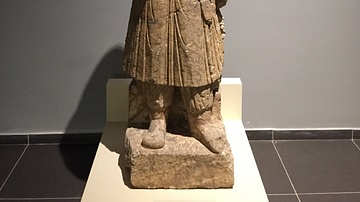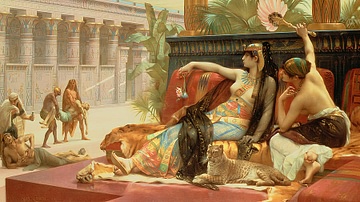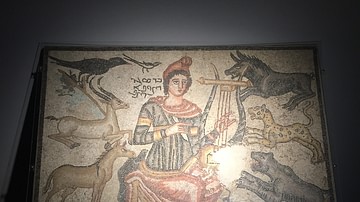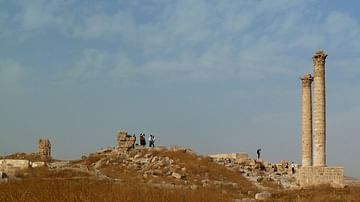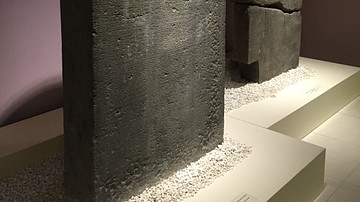Illustration
In the center of this mosaic dating from CE 563 is a symbol representing the four apostles who wrote the four gospels found in the New Testament: Matthew is depicted as a lion; Mark is depicted as an ox; Luke is depicted as a man; and John is depicted as an eagle. Within the frame, a Syriac description reads, "this house was built in CE 563 during the days of Abbot Sam by Helpidus and Yuhannus."
About the Author
Cite This Work
APA Style
III, R. J. (2015, October 14). Yolbilen ("those who know the way") Mosaic: Edessa (Sanliurfa). World History Encyclopedia. Retrieved from https://www.worldhistory.org/image/4125/yolbilen-those-who-know-the-way-mosaic-edessa-sanl/
Chicago Style
III, Ronnie Jones. "Yolbilen ("those who know the way") Mosaic: Edessa (Sanliurfa)." World History Encyclopedia. Last modified October 14, 2015. https://www.worldhistory.org/image/4125/yolbilen-those-who-know-the-way-mosaic-edessa-sanl/.
MLA Style
III, Ronnie Jones. "Yolbilen ("those who know the way") Mosaic: Edessa (Sanliurfa)." World History Encyclopedia. World History Encyclopedia, 14 Oct 2015, https://www.worldhistory.org/image/4125/yolbilen-those-who-know-the-way-mosaic-edessa-sanl/. Web. 17 Apr 2025.



